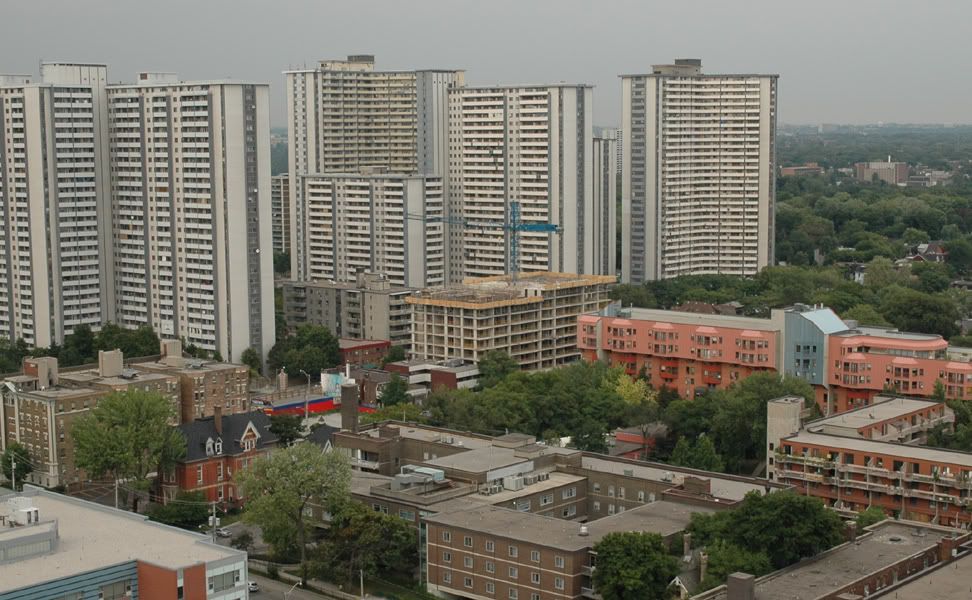Design and design
Although I've made this point before (and it always goes over like a lead balloon) I'm not really in the habit of encouraging or making excuses for ugly buildings.
Zephyr, I like your calling attention to the two elements of design, which includes both use and aesthetics. I'm assuming, since no one has stated otherwise, that no one really objects to the size or uses of this building or the way it "meets the street" (ie., there will be stores). I often wish that the word "design" didn't exist, since it opens up such a confusion of aesthetic considerations and use considerations, I find that Christopher Hume's columns do this frequently, they are a jumble of considerations of use and aesthetics, so that sometimes he says nothing negative about a building at all and then gives it (deservingly) a D - because it's fugly. But he hasn't actually said that, he's only referred to what it "gives back to the city".
I believe most people on this board they say "design" mean the aesthetics of a building and nothing wrong with that - I generally prefer good looking buildings to ugly ones and generally agree with UrbanShocker, interchange42 etc., about which is which). I really do wish that the Star was better looking, and I think Zephyr's rebuttals about cost and/or chances of getting built are well taken.
One thing I think is interesting is that two proposals have been made about how to make buildings that look better:
Zephyr said, "If nothing else the developers would be on guard, ideally on notice, that somebody is aware they are trying to sneak in the backdoor, the bad, the worse, and the offensive" while Shocker said "We can expand design culture to include the consumer".
The first of these ("force the developers/designers through some kind of collective action) leads us inevitably to design panels, the current political solution to our mishmash of bad and good. I'm in favour of design panels, but having witnessed their execution in Vancouver I am also a bit leery about them. Vancouver avoids the worst of what Toronto gets - the Stars - but I find the expo lands are too much of a piece and that the buildings there are too similar to my taste. Though I might admire much of it, in the end I find the area oppressive and am happy to skip on back to the West End, with it's mixture of blights and pleasure. That might just be my taste - I prefer London's unpredictability to Paris's anal prettiness - but I nonetheless look forward to panels in this city.
The second of these ("educate the consumers") I find frankly funny. We've all had the experience of people, educated and lovely people who can make a mean salad, saying "the one condo I really like is that one on Jarvis" (I refer, of course, to the French Quarter). The idea that we might educate consumers to prefer nicer looking buildings seems to arise from a gross misunderstanding of how our commercial society works. And frankly, if I were to educate consumers, educating them to choose an aesthetically appealing building would be fairly far down my list of things to start with. Utility, which not excusing ugliness, is so much more important. Would I prefer that consumers purchase the Star of Downtown that some really beautiful sleek houses in former farmland in Milton? Yes, I would. Anyways, consumer education is a loser's game, no one really wants it to happen because then our economy would fall apart as people realize they don't actually need 14 different kinds of body cream that do, well, nothing.
I am leaving today for greener and better designed pastures. I shall endeavour to take some photos along the way.
Oh, and BugEyed, I suspect you're in the wrong forum.





